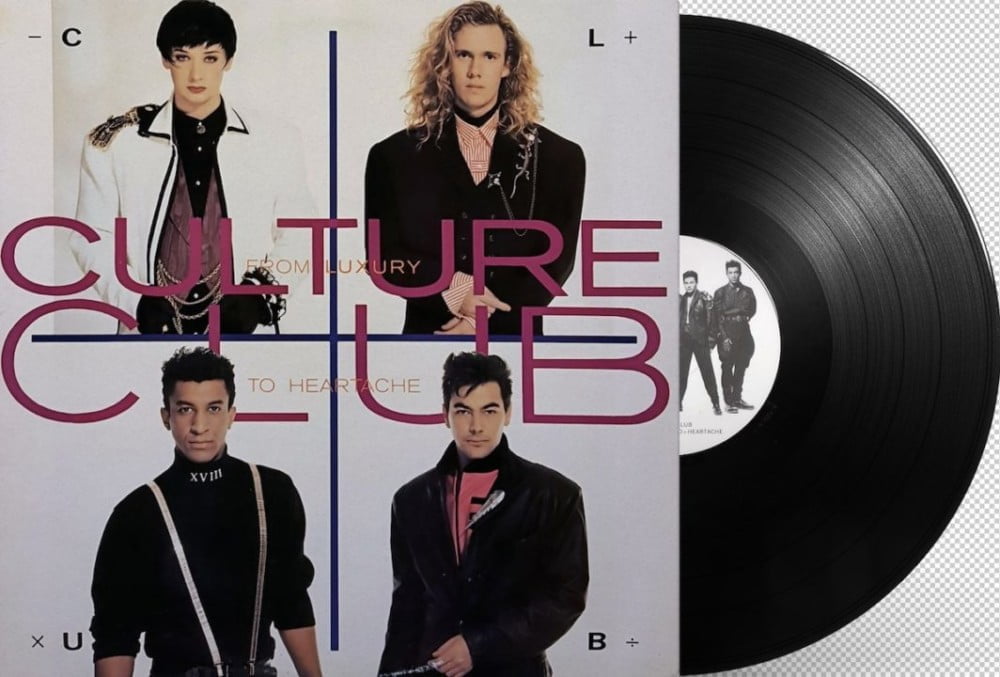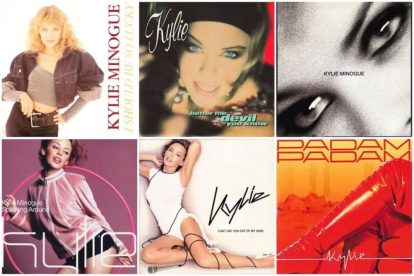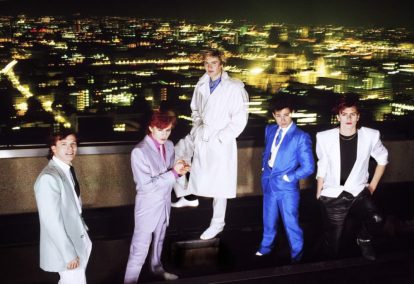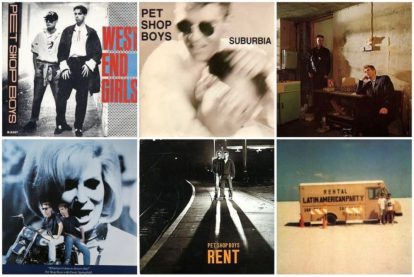An album that was intended to restore Culture Club as a chart force to be reckoned with, the band’s fourth LP ended up quickening their demise instead. now 35 years on from its release, Jon O’Brien takes a look back at the record that even Boy George appears embarrassed about.

A disaster of mediocrity,” screamed the once-glowing Smash Hits about Waking Up With The House On Fire, the Culture Club album that had failed to scale the giddy heights of its two predecessors.
It was clear that the band who’d defined the early 80s but had started to seriously flag by its mid-way point needed to mix things up for studio effort number four. For some, including their frontman, they tried just a little too hard.
Far from returning the quartet to the top of the charts, 1986’s From Luxury To Heartache proved to be the final nail in the coffin of their pomp years. Still, the fact that it hit the shelves at all is nothing short of a miracle. After all, its 10 tracks were recorded amidst seemingly insurmountable tensions. Not only had the on/off Boy George and Jon Moss just gone through their messiest split but the former had suddenly gone from a virtual teetotaller to a full-blown heroin addict within a matter of months. With Boy George wrapped up within the grips of his addiction, studio sessions reportedly also became delayed and interrupted so frequently that the in-demand man tasked with re-energising their sound, Arif Mardin, had no option but to delegate the final production stages to engineer Lew Hahn.
Considering this difficult inception, it’s perhaps little wonder that Culture Club appear determined to erase From Luxury To Heartache out of existence. Unlike other albums from their heyday, it’s never received the remastering treatment, while lead single Move Away is its only track to have regularly featured in the band’s reunion setlists.
George himself has also practically disowned the record, claiming in Luke Bainbridge’s compelling book The True Story Of Acid House that it had been immediately rendered outdated by the burgeoning dance scene. “I remember thinking, ‘Oh my god, we’ve got it so wrong,’” he admitted while recalling the “empty and spacious” sounds he heard at New York’s Paradise Garage during some downtime from recording.
From Luxury To Heartache could never be deemed empty and spacious, that’s for sure. Although best known for collaborating with Aretha, Dusty and countless other divas, multiple Grammy award-winning producer Mardin had also just worked his magic on another British pop act’s masterpiece, Scritti Politti’s Cupid & Psyche 85.
He adopts a similarly maximalist approach here, filling almost every second with his bank of synths and drum machine beats (you get the feeling Moss may have been largely surplus to requirements).
“Really, really overproduced,” George added in his assessment nearly two decades on. It’s hard to disagree listening to the likes of I Pray, where some unfortunately-worded demands (“We need more than ecstasy”) are drowned out by squalling hair metal guitar solos and synth hooks bizarrely reminiscent of the Ghostbusters theme. Even the mighty tones of Jocelyn Brown – joining ever-present Helen Terry on backing vocals – struggle to make themselves heard.
Yet elsewhere, George’s dismissal seems a little hasty. Arguably, Culture Club have never sounded more vibrant than on the slap-bass funk of Gusto Blusto, one of many kiss-offs no doubt aimed at the drummer in the room (“You told me I was such a fool/ First you were kind, then you were cruel”). Released nine months later, Duran Duran’s similar Notorious suggests Simon Le Bon and co. were taking notes.
Mardin’s box of studio tricks also gel together nicely on Too Bad, a playful nod to the American Dream cleverly interspersed with sports stadium cheers, and Sexuality, a propulsive dancefloor number co-written by Michael Rudetsky.
Ultimately, the biggest misstep about From Luxury To Heartache wasn’t the decision to take a break from regular producer Steve Levine or its failure to embrace the music emerging from the New York club circuit, but its choice of singles. Move Away might have given the Club their final UK Top 10 hit – well, until 1998 comeback I Just Wanna Be Loved, anyway – but it’s a rather limp piece of blue-eyed soul which proves that the foursome weren’t entirely committed to breaking the mould.
Second single God Thank You Woman (UK No.31) is even more pedestrian, combining faux-gospel pop with the kind of corny sentiments (“I would give my heart to you/ You’re the air that I breathe”) that you’d expect to see on a cheap Hallmark card. It’s quite possibly the group’s weakest single, though at least the promo in which George moves around archival footage of Brigitte Bardot, Sophia Loren and several other screen goddesses is a rather fun addition to their colourful videography.
Appearing to offer more of the same, From Luxury To Heartache inevitably succumbed to the law of diminishing returns. The record did maintain the band’s run of Top 10 entries, yet it tumbled out of the charts after just six weeks. And despite a memorable guest spot on The A-Team – where the “English glitter prince” helps out Mr T’s gang by winning over a bunch of angry rednecks through the power of song, obviously – it fared even worse in the States.
Of course, even if the album had reversed their commercial fortunes, it’s likely that Culture Club would still have imploded. George’s drug habits only became even more serious and his relationships with Mikey Craig, Roy Hay and Moss even sourer. His post-rehab explorations of acid house and the Hare Krishna movement weren’t exactly in the group’s wheelhouse either. Nevertheless, contrary to the singer’s belief, From Luxury To Heartache was an admirable attempt at reinvention which couldn’t be described as disastrous, nor mediocre.
Classic Pop may earn commission from the links on this page, but we only feature products we think you will enjoy.






